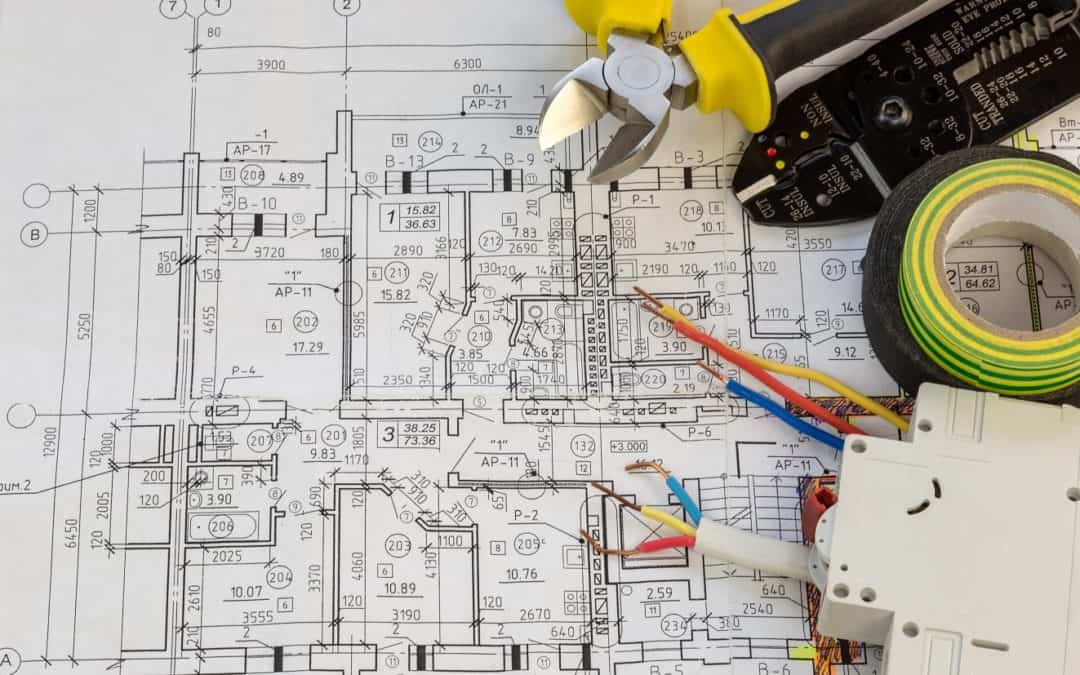High-Quality Electrical Design Services for Commercial and Projects
High-Quality Electrical Design Services for Commercial and Projects
Blog Article
Cutting-edge Electric Design Services for Modern Framework
The advancement of contemporary facilities demands cutting-edge electric design solutions that not just boost operational effectiveness but also address sustainability obstacles. As urban settings expand progressively complex, including innovations such as wise grids and renewable resource sources becomes critical. These developments not just guarantee to maximize power usage but additionally foster strength against future demands. The landscape of electric design is going through quick makeover, triggering a more detailed examination of arising trends and their ramifications for long-term framework practicality. What might the future hold for those that embrace these innovative methods?
Importance of Innovative Electrical Design
Innovative electric design plays a critical role in modern facilities, affecting not just effectiveness but also sustainability. As cities progress and the need for power rises, the demand for advanced electric systems ends up being vital. These systems have to not only fulfill existing needs yet additionally anticipate future growth and technological improvements.
A well-executed electrical design can significantly reduce power consumption, thus reducing operational prices and minimizing ecological effect. By integrating renewable resource resources, such as solar panels and wind generators, innovative layouts can boost energy self-reliance and resilience. Additionally, wise grid innovations enable real-time monitoring and administration of power distribution, maximizing performance and reducing waste.
Safety and security is an additional vital aspect of electric design. Carrying out innovative innovations and rigorous requirements can minimize risks connected with electrical failures, making sure a protected atmosphere for companies and locals alike. In addition, ingenious layouts help with flexibility, enabling infrastructures to incorporate arising technologies flawlessly.
Trick Trends in Electrical Design
As the landscape of electrical design remains to evolve, a number of vital patterns are forming the future of the industry. One substantial fad is the integration of wise modern technology right into electric systems. The proliferation of the Web of Points (IoT) has allowed real-time surveillance and control of electric devices, boosting effectiveness and facilitating predictive upkeep.
Another pattern is the growing focus on modular design. This strategy permits scalable and adaptable remedies, allowing infrastructure to adjust to changing needs without substantial improvements. Furthermore, the usage of sophisticated simulation devices and Building Info Modeling (BIM) is coming to be significantly widespread, streamlining the design process and boosting cooperation among stakeholders.
Furthermore, improvements in products science are causing the advancement of lighter, much more sturdy, and energy-efficient components. This innovation is particularly vital for high-performance structures and infrastructure projects.
Lastly, there is a significant shift towards data-driven decision-making - electrical design services. Leveraging information analytics aids designers enhance systems for performance and cost-effectiveness. With each other, these fads symbolize a transformative age in electrical design, improving capability, sustainability, and durability in modern framework
Sustainable Energy Solutions
Lasting energy solutions are progressively coming to be an important focus in electric design, showing a broader dedication to environmental obligation and resource efficiency. These options aim to minimize ecological impact while maximizing energy consumption in numerous facilities, from household structures to big commercial facilities.
Among the foremost methods involves the index combination of visit this website renewable power sources, such as photovoltaic panels and wind turbines, right into electric systems. This not just decreases dependence on fossil fuels however additionally enhances power durability. Additionally, ingenious power storage systems, such as advanced batteries, make it possible for efficient administration and circulation of energy, making sure that excess power produced throughout top manufacturing can be utilized during high demand durations.
In addition, energy-efficient design practices are being adopted to enhance total system efficiency. This consists of making use of energy-efficient lighting, heating and cooling systems, and clever building innovations that adjust and check power use based upon tenancy and ecological problems.
Smart Grid Technologies
The execution of lasting power remedies normally brings about the exploration of wise grid innovations, which play a crucial function in modernizing electrical systems. Smart grids leverage advanced communication modern technologies and information analytics to improve the reliability, efficiency, and sustainability of electrical power distribution. By integrating digital technology with traditional grid infrastructure, these systems help with real-time tracking, automated control, and improved decision-making capacities.
Among the vital features of wise grids is their capacity to accommodate renewable resource resources, such as solar and wind power. This flexibility not only reduces dependence on fossil gas yet additionally enables a more decentralized energy manufacturing design. Additionally, smart grids enable need feedback programs, where customers can change their energy usage based on real-time prices, thus promoting power preservation and reducing peak tons demands.
Additionally, clever grid innovations improve grid strength by allowing quicker identification and resolution of failures, eventually reducing downtime. With anticipating maintenance and analytics, energies can optimize procedures and important source improve solution distribution. As neighborhoods and cities proceed to develop, wise grid innovations are crucial for developing a efficient and lasting electric facilities that meets the needs of modern-day society.

Future-Proofing Facilities
To make sure long-lasting stability and adaptability, future-proofing infrastructure is vital in the swiftly progressing landscape of electric design solutions. As modern technology advances and power demands shift, it is important that electric systems are developed with flexibility in mind. This entails integrating scalable solutions that can suit future upgrades without demanding substantial overhauls.

Additionally, sustainability should be a keystone of future-proofed designs. Using renewable resource sources, such as solar and wind, and enhancing power efficiency decrease dependency on nonrenewable fuel sources, aligning with international efforts to deal with climate adjustment.
Final Thought
By prioritizing efficiency, sustainability, and adaptability, these solutions resolve the evolving needs of energy systems. The integration of smart grid modern technologies and sustainable energy services enhances durability and lowers functional prices.
A well-executed electric design can substantially minimize energy usage, therefore decreasing functional costs and minimizing environmental impact. By incorporating sustainable power resources, such as solar panels and wind turbines, innovative layouts can enhance power independence and resilience. In addition, cutting-edge power storage systems, such as sophisticated batteries, make it possible for effective management and circulation of power, making certain that excess energy created during top manufacturing can be utilized throughout high demand durations.
Clever grids allow demand feedback programs, where consumers can adjust their power usage based on real-time rates, consequently advertising energy preservation and lowering peak tons demands. (electrical design services)
As modern technology breakthroughs and power demands change, it is essential that electric systems are developed with adaptability in mind.
Report this page